The HTC Evo 4G is perhaps Sprint's most important phone ever. When it was released in 2010, it was Sprint's best phone by a long shot, and one of only a few truly great Android devices. Two years later, Sprint's in dire need of another winner, and it's searching far and wide: the company paid dearly to carry the iPhone, and is also now selling the Samsung Galaxy Nexus. Sprint's next flagship phone, though, might be another Evo. HTC recently released its One series of devices, the One X (available on AT&T) and the One S (for T-Mobile). Sprint gets the Evo 4G LTE, a variant of the One X with some Evo-style design and feature tweaks, but all the same specs that made us think the One X is among the best smartphones ever made.
The $199 (with contract, natch) Evo 4G LTE has a 1.5GHz dual-core Snapdragon S4 processor, 1GB of RAM, an 8-megapixel camera, a huge 4.7-inch Super LCD... and a freaking kickstand. It also has an LTE radio inside; that won't do you much good for now, but Sprint's currently readying its LTE network, and this phone will be ready for it on day one. The sum of those parts in the One X (minus the kickstand) made for one of our favorite phones yet — can lightning strike again with the Evo 4G LTE? Let's find out.
Video Review
Video Review
HTC has clearly figured out what Samsung and others haven't: materials matter. Like the One X, the Evo 4G LTE (which I'll just call the Evo from now on) is a well-built phone with an incredibly high-end feel to it. The phone is black all over, save for a silver metal strip running around the edges. The whole phone has a metallic look to it, again lending it a classy feel you won't get from a plastic Samsung phone. Even with such high build quality, the Evo's still thin (8.9mm) and light (4.7 ounces) enough to barely be noticed in your pocket.
The Evo is a fairly minimal device on the front, but around back things get crazy. The bottom of the back panel is a smooth matte black, and feels really nice to hold. The top part of the panel is a glossy black surface, with a red-ringed camera lens in the middle. It's quite striking, and actually looks pretty good out of the box — five minutes later, though, the top is riddled with fingerprints and doesn't look nearly as nice. I'm picky about fingerprints, and found myself constantly wiping both the front and back of the Evo on my jeans to try and clean off the surfaces.
The two pieces of the back are split by a red stripe that houses an Evo classic: a kickstand. The stand is barely noticeable in the red stripe until you pull it out (which is oddly difficult to do, by the way), and when extended it holds the Evo up at a handful of different positions. It's a sturdy stand, and a nice thing to have if you want to watch movies in bed or use your phone as an alarm clock, but it's also totally unobtrusive if you don't want to use it. Sprint loves its kickstands, and so do I, so I'm glad to see it work so well here.
The Evo is huge — it has to be, with a 4.7-inch display — but even at 5.3 inches tall and 2.7 inches wide it doesn't feel unwieldy. I wish the power button were mounted on the side, where it's easier to reach without shimmying your hand up the side of the phone, but otherwise the phone is sensibly laid out and completely usable. The headphone jack sits next to the power button on top; there's a dedicated camera button on the right side, underneath the two volume buttons. If you pry the top glossy back panel off, you'll get access to a microSD card slot (and some cool-looking circuitry). The microSD slot is a definite advantage over the finite storage of the One X, despite being a little hard to access underneath the back panel. (There's also 16GB of internal storage.) All the controls blend nicely into the phone's edges, but the flip side is that they can be hard to press, and occasionally take two or three mashes to respond.
The Evo's design is probably a more polarizing one than the other One series phones — you'll either love or hate the two-tone back. Regardless, the Evo certainly lives up to the high bar set by the One X and One S in terms of build and material quality.
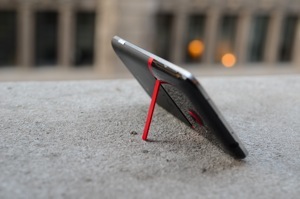
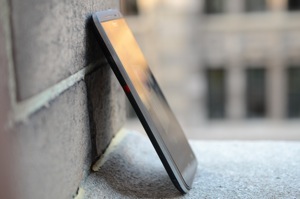

Display
I could look at this screen all day


More than once, I found myself just sort of staring at the Evo's 4.7-inch display, for no particular reason. It's the best display I've ever seen on a smartphone by a long shot, and one of the best screens I've ever looked at, period. It has nearly 180-degree viewing angles, and the most accurate color reproduction I've seen — many displays give off a slightly warm color temperature or are too high-contrast, but the Evo's display is exactly right. At 720p it's so high-res that I can't make out individual pixels, and in general it's far superior to the PenTile display on the Galaxy Nexus and many other smartphones.
A phone's display is arguably its most important feature at this point, since it's the thing you'll be starting at all the time. It's the Evo's biggest advantage over the Galaxy Nexus, which looks pedestrian in comparison. So much screen sucks down a lot of power (more on that below), but it's a worthwhile tradeoff to get such excellent quality.
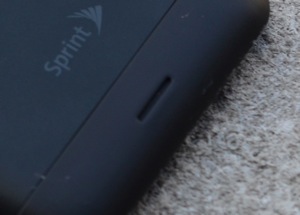
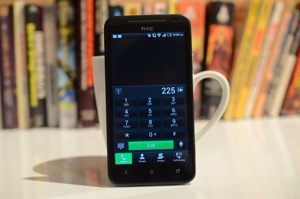
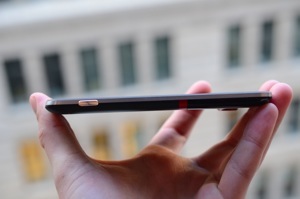
For now, the Evo's call quality is basically industry average: relatively clear, but there's some distortion and people tend to sound a bit like they're inside a tin can. Speakerphone performance wasn't great, largely because the Evo's noise cancellation isn't strong enough; callers told me they heard a huge amount of background noise as I talked on speakerphone.
I say "for now" because the situation should improve drastically soon. When the Evo was launched at an event in New York City, we got to test out HD Voice technology, which has existed around the world but is now coming to the US inside the Evo. It makes a world of difference when it comes to call quality — it sounds like a Skype call, much fuller, clearer, and richer than a typical phone call. There's no telling when you'll be able to have HD voice conversations with your friends — there are hardware, software, and network components required to make it work — but when it's available, you might just start making phone calls again.
There's one more "for now" with the Evo, and it's LTE. The initialism may be in the phone's name, but you won't get any of it yet, because Sprint's still gearing up to roll it out — that should happen in certain cities soon, but it'll be a while before it's widely available. I wouldn't even call what you currently get "4G" either, since I saw speeds between 500Kbps and 2Mbps down, and never broke the 1Mbps mark for upload speeds. If you buy the Evo, do so knowing the last two parts of its name are more a promise than a reality, and they might be a promise you wait a while for.
Reception was okay, but I was a little surprised when a few times I ran into pockets of no coverage on Sprint. The phone would show a bar or two, but the browser and other apps would report that there was no internet connection. Meanwhile, my personal phone on Verizon always had connectivity in those spots. It only happened a few times, and it's hard to tell whether Sprint or the Evo is to blame, but it was a bit troubling nonetheless.
HTC's a big believer in Beats Audio, but I'm really not: on this and every phone, it appears to be little more than an EQ tweak to bring out bass and make the song sound a little punchier. Some people will like the effect, I'm sure, but it doesn't do much for me (and it really doesn't do much at all). That said, the Evo's audio performance is pretty solid — the speaker on the back is small, but it's reasonably loud, and outputs fairly clear sound. You'll need to hold up the phone when you're listening to something, though, because if it's lying face-up sound just goes straight downward.
Cameras and software
The Evo's camera and software are virtually unchanged from the One X, so I'll direct you there for the whole skinny. But here's the short version:
Cameras
HTC has built a fantastic camera system, without building a fantastic camera. The app is great, with tons of options and filters available easily; the ImageSense chip in the Evo makes the camera insanely fast, able to take up to 200 shots in rapid succession through a burst mode. Its pictures are good, but not great — dynamic range in particular leaves a lot to be desired, so you'll often have half your picture dark and the other half bright, or half properly exposed and the other half totally blown out. Colors also look a bit washed out, even in good lighting. The 8-megapixel sensor captures good images in good light, and is certainly one of the better smartphone cameras out there, but no one's ever going to think your photos came from anything but a phone.
Great camera app, pretty good camera
1080p video recording is basically the same story: pretty good for a camera phone, but not good enough to be a competitor to a dedicated camera or camcorder. The 1.3-megapixel front-facing camera is exactly like every other front-facing phone camera.



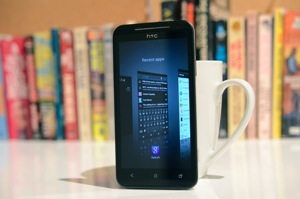
Software
The camera software is one of the best things about Sense 4.0, the latest version of HTC's Android UI skin. Once again, little's changed from the One X — it's the best Sense yet, but it's still not as good as stock Android. There are a handful of things that are legitimately worse — the default keyboard is bad, the 3D multitasking menu is much less efficient, and there's often wasted screen real estate because there are capacitive menu keys rather than on-screen buttons. The biggest problem, though, is that it disrupts an otherwise cohesive and beautiful Android design aesthetic. Android 4.0 finally infused design into the entire operating system, and Sense (and any UI skin, for that matter) undoes some of that work. HTC's been telling anyone who will listen about how toned down Sense 4.0 is, and that's certainly the case, but it's not yet to the point where I'm in favor of using it.
There's a lot less bloatware on the Evo than on AT&T's One X or T-Mobile's One S, and some of it is actually really useful. Dropbox comes preloaded, and upon signing in you'll actually be given 25GB of free online storage — that's pretty awesome. Google Wallet also comes preinstalled, and works with the Evo's NFC chip. There's the usual cadre of carrier- and HTC-installed apps like Watch and Sprint Zone, but Sprint showed definite restraint here, and the phone feels much cleaner for it.
Performance and battery life
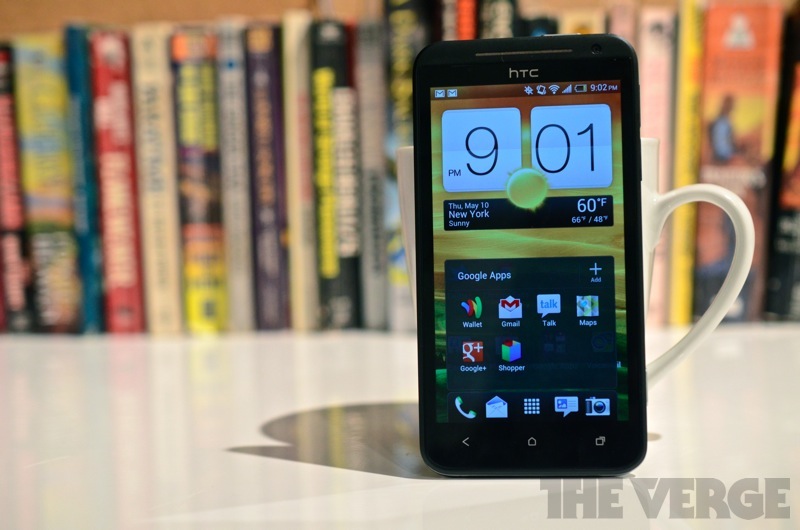
The 1.5GHz Snapdragon processor inside the Evo absolutely screams. Whether I was playing games like Temple Run (best game ever, by the way), switching between two dozen apps, or just pinching and zooming in Chrome, the Evo handled everything I threw at it with aplomb. There were a couple of hiccups in the software, but I blame Sense entirely: every once in a while when I'd hit the home button, I'd see a "Loading" screen while Sense got ready to show itself off. The occasional slowdowns are annoying, but they're fewer and further between on the Evo than on nearly any prior Android phone.
Our benchmarks bore out my beliefs, too. The Evo scored over 5,000 on Quadrant, placing it at the very top of the spectrum for the overall performance test. It's similarly top-notch in Sunspider, a test of browser performance, and in our graphics tests as well. The latest-gen Snapdragon S4 is a killer processor, and the Evo runs it well.
| Quadrant | Vellamo | GLB 2.1 Egypt (720p) | GLB 2.1 Egypt (1080p) | AnTuTu | |
|---|---|---|---|---|---|
| HTC Evo 4G LTE | 5,070 | 2,335 | 56fps | 29fps | 6,612 |
| HTC One X (LTE) | 4,925 | 2,346 | 57fps | 29fps | 6,681 |
| HTC One S | 5,141 | 2,420 | 57fps | 29fps | 7,107 |
| Galaxy Nexus | 2,002 | 1,065 | 28fps | 14fps | 6,079 |
The One X has great battery life, so the fact that the Evo has an even larger 2,000mAh battery than its sibling (and no LTE to worry about) gave me great hope for its longevity. Unfortunately, I found that even getting a full day from the Evo took some finesse. Consider: I unplugged the phone at 4:15am, used it a bit on the way to the airport, turned it off on the plane until about 9, then streamed music through Rdio for about 40 minutes and did some browsing and tweeting from the device, with brightness at about 40 percent. By noon, I was down to 25 percent battery. We're running our official test now for more comparable results, but though in practice you should be able to get a full day's use from the phone with some battery TLC (and a lower brightness setting), I'm still a little underwhelmed with its performance.
How much do you really like Sprint?
The Evo 4G LTE's appeal is a question of priorities. If you're committed to Sprint and have no plans on leaving, you should absolutely buy the Evo. It's well-designed, insanely fast, and ready for Sprint's HD Voice and LTE-filled future. I'd recommend it over the Galaxy Nexus and iPhone, the former because of its superior display and the latter because the Evo's ready for HD Voice and LTE. If you're thinking about leaving Sprint, though, the Evo 4G LTE probably isn't enough to keep you around — there are similarly good phones available on other carriers, and the One X already connects to AT&T's fast LTE network. Sprint's got the hardware it needs to compete thanks to the Evo, which will certainly be the flagship phone the carrier's been looking for since the original Evo 4G, but for now the network just isn't ready.
Compare this: HTC Evo 4G LTE vs. One X, Galaxy Nexus, and more!
:format(webp)/cdn.vox-cdn.com/uploads/chorus_asset/file/12797113/DSC_4514-hero.1419968451.jpg)
:format(webp)/cdn.vox-cdn.com/uploads/chorus_asset/file/12797113/DSC_4514-hero.1419968451.jpg)
Share this story